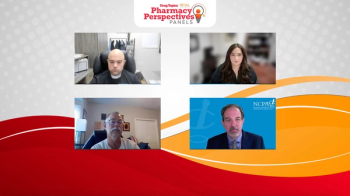
Pharmacists Lack Knowledge, Motivation in Reporting Adverse Drug Reactions
In an exploration of provider reporting and pharmacovigilance, researchers assessed community pharmacists’ knowledge, attitudes, and practices regarding adverse drug reactions.
Significant gaps were uncovered in community pharmacists’ knowledge, attitudes, and practices (KAP) regarding adverse drug reaction (ADR) reporting, according to a study published in Exploratory Research in Clinical and Social Pharmacy.1
“According to the World Health Organization, ADR has been defined as ‘a response which is noxious and unintended, and which occurs at doses normally used in humans for the prophylaxis, diagnosis, or therapy of disease, or for the modification of physiological function,’” wrote authors of the study. “The negative impact of ADRs is well-known in the literature; several studies reported its consequences regarding cost, increased hospitalization, and mortality.”
When it comes to managing a patient’s prescription drug regimen, ADRs are usually ranked high regarding events that patients and pharmacists work diligently to avoid. However, they’re still significantly prominent. In 2022, a total of more than 1.25 million serious ADRs reported resulted in close to 175,000 deaths.2 Aside from increased risk of mortality, ADRs also impact patients’ medical and emergency costs, with 6 emergency department visits for adverse medication events per 1000 patients.
READ MORE:
Despite the potential harms that could stem from ADRs, patients across the country have access to community pharmacies that provide medication management services. Previous studies have shown that pharmacist-led interventions for comprehensive medication management resulted in improved quality of life among patients as well as a significant reduction in ADRs.3
However, for patients taking any variety of prescription drugs, not everyone has access to or regularly visits their local pharmacist. On top of that, pharmacists may not have the knowledge or understand the proper procedures for reporting and managing ADRs. Amid the lack of research toward community pharmacists’ KAP regarding ADR reporting, researchers of the current study investigated potential gaps and barriers within the pharmacovigilance process.
“This study aimed to evaluate the KAP of Jordanian community pharmacists regarding ADR reporting and pharmacovigilance,” they continued.1 “It also sought to identify barriers and enablers to guide development of future interventions to enhance pharmacovigilance activities within community pharmacies.”
Among the community pharmacist pool in Jordan, researchers conducted a cross-sectional questionnaire study that was self-administered from July to September of 2023.
Researchers conducted a literature review on ADRs and pharmacovigilance to assist them in developing questions. The questionnaire was separated into 5 sections with a varying amount of questions in each: demographic and pharmacy-related information; awareness of ADR reporting and pharmacovigilance; knowledge about iatrogenic diseases; attitudes toward ADR reporting and pharmacovigilance, including perceptions of responsibility, confidence in reporting, and satisfaction with training; and practices related to ADR reporting, including the frequency of medication list reviews, ADR documentation, and follow-up on reported incidents.1
A total of 239 community pharmacists (65.3% women; 23% aged 31-40 years; 92.1% in urban pharmacies) completed questionnaires.
“The findings of this study highlight the imperative need for effective and proactive strategies to enhance ADR reporting activities among community pharmacists,” wrote the authors. “The optimal use of available pharmacovigilance systems could serve as a cornerstone strategy to systematically improve ADR reporting.”
First, regarding pharmacists’ knowledge and experience with ADRs, just 62.3% were able to define pharmacovigilance. Furthermore, highlighting pharmacists’ inexperience, 67.5% said they reported ADRs 5 times or less in their entire careers, while 14.2% believed physicians are solely responsible for managing patients’ ADRs.
A large proportion (113) of pharmacists encountered ADRs and not 1 of them reported, owing to time constraints, a lack of reporting skills, and other barriers that reduced their odds of reporting the ADR.
“In Jordan, community pharmacists are often the first point of contact for patients, particularly due to the ease of access to community pharmacies compared to hospitals or clinics,” the authors continued.1 “This places community pharmacists in a pivotal role for identifying and reporting ADRs. However, societal expectations and patient-pharmacist dynamics may influence pharmacists' confidence in reporting ADRs.”
Similar to the US, pharmacists in Jordan are the most accessible providers for patients in the community and they are authorities on medication management. But when society places pharmacists in a scope with less jurisdiction on medical advice compared with physicians and advanced practice providers, pharmacists’ confidence or ambition to seek further knowledge may be stunted.
Future research will focus on the policies, education, and systemic infrastructure necessary to improve ADR reporting and overall pharmacovigilance.
“To overcome these challenges, authorities must establish obvious ADR reporting guidelines, integrate mandatory pharmacovigilance education into undergraduate pharmacy curricula, and provide continuous professional development programs,” they concluded.1 “Future efforts should prioritize policy changes, targeted educational interventions, and improved system infrastructure to strengthen ADR monitoring and promote medication safety in community pharmacy settings.”
READ MORE:
Don’t get left behind: Sign up today for our
REFERENCES
1. Alwidyan T, Odeh M, Ibrahim AH, et al. Knowledge, attitude, and practice among community pharmacists toward adverse drug reaction reporting and pharmacovigilance: a nationwide survey. Explor Res Clin Soc Pharm. 2025;18:100578. https://doi.org/10.1016/j.rcsop.2025.100578
2. Kommu S, Whitfield P. Adverse drug reactions. StatPearls Publishing. January 10, 2024. Accessed August 22, 2025. https://www.ncbi.nlm.nih.gov/books/NBK599521/
3. Brajković A, Bićanić LA, Strgačić M, et al. The impact of pharmacist-led medication management services on the quality of life and adverse drug reaction occurrence. Pharmacy (Basel). 2022 Aug 25;10(5):102. doi: 10.3390/pharmacy10050102.
Newsletter
Pharmacy practice is always changing. Stay ahead of the curve with the Drug Topics newsletter and get the latest drug information, industry trends, and patient care tips.






































































































































